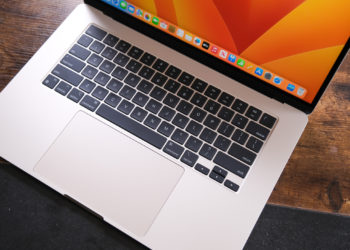Commercial mining on the miles-deep Pacific Ocean floor came one step closer to reality with an announcement late Tuesday by the U.S. Interior Department that it would evaluate a request from a California-based company to extract metals off the coast of American Samoa.
The move follows an executive order last month that urged government agencies to expedite permits for seabed mining in U.S. territorial waters as well as international waters. Most other nations argue that the United States does not have the legal right to mine the seabed beyond its own territorial waters.
Parts of the ocean floor are blanketed by potato-size nodules containing valuable minerals like nickel, cobalt and manganese that are essential to advanced technologies that the United States considers critical to its economic and military security. Supply chains of many of these valuable minerals are increasingly controlled by China.
No commercial-scale mining of the seabed has ever taken place. The technological hurdles to seabed mining are high, and there have been serious concerns about the environmental consequences. Yet many countries have been impatient to get started as demand grows for the metals found there.
Under a United Nations treaty signed by nearly every country except the United States, mining in international waters is supposed to wait until regulations and environmental protections have been agreed upon. President Trump’s executive order last month stirred outrage across a broad swath of governments and activist groups that said permits issued unilaterally by the U.S. government would be in breach of widely accepted international law.
The Interior Department’s announcement on Tuesday pertains to a request from a company called Impossible Metals to move toward mining in U.S. territorial waters. In early April, before the executive order was issued, the company had requested that the government consider granting it access to nearly 30,000 square miles of those waters.
Testifying in front of a congressional subcommittee in April, the company’s chief executive, Oliver Gunasekara, said the election of a new, Republican governor in American Samoa last November boded well for their plans. An application made last year by the company to the Interior Department’s Bureau of Ocean Energy Management was denied and, shortly thereafter, the previous governor of American Samoa, a Democrat, enacted a moratorium on seabed mining in the territory’s waters.
American Samoa, which is around 2,600 miles southwest of Hawaii, is not a U.S. state and has no representation in Congress. It is also the only U.S. territory where people born there are not automatically granted citizenship at birth.
“As soon as the executive order came out, that very much directed the different groups to accelerate and prioritize deep-sea mining,” Mr. Gunasekara said in an interview on Wednesday.
He added that his company’s request was to explore a zone near the United States’ maritime border with the Cook Islands. “It avoids any existing marine sanctuaries, even though there was a recent executive order that rescinded them,” he said, referring to Mr. Trump’s opening of the Pacific Remote Islands Marine National Monument to commercial fishing in April.
For decades, negotiators at the International Seabed Authority, an agency affiliated with the United Nations, have been drafting and redrafting a rule book for deep-sea mining that would cover everything from environmental regulations to royalty payments. Despite a pledge to finalize it by this year, negotiators seemed unlikely to meet that deadline.
Nevertheless, anticipating that mining would eventually be allowed, a handful of companies have invested heavily in developing technologies to mine the ocean floor. They include ships with huge claws that would extend down to the seabed, as well as autonomous vehicles attached to gargantuan vacuums that would scour the ocean bottom.
The furthest along is the Metals Company, a Canadian enterprise that, so far, is the only company to apply for a U.S. permit after Mr. Trump’s executive order.
Through a U.S.-based subsidiary, the company is seeking to mine in the so-called Clarion-Clipperton Zone, in international waters, about halfway between Hawaii and Mexico, and has spent more than a half-billion dollars preparing to mine. Its application will go through a separate permitting process run by the National Oceanic and Atmospheric Administration, which is part of the Commerce Department.
The Metals Company has developed an extraction technology that resembles a vacuum attached to an autonomous vehicle that would trundle across the seafloor, sending up nodules to a ship through a pipe. The company proposing to mine near American Samoa, Impossible Metals, says it has a machine that will pick up nodules individually and without actually landing on the seafloor.
An Interior Department news release said the department would now begin the process of seeking input “from the Indigenous Island community, ocean users, industry stakeholders, government agencies and the public,” in its consideration of whether to grant Impossible Metals request.
Mr. Gunasekara said this was only the beginning of a “multiyear process” that he hoped would move from public consultation to exploration to environmental assessments and ultimately a production license.
Max Bearak is a Times reporter who writes about global energy and climate policies and new approaches to reducing greenhouse gas emissions.
The post U.S. Takes a Another Step Toward Opening the Seabed for Mining appeared first on New York Times.




